Hydraulic presses have become an indispensable tool in various industries, transforming the way materials are shaped and formed. These powerful machines, driven by the principle of hydraulic force, have evolved significantly over the years, with continuous advancements shaping the future of manufacturing. Today, we delve into the fascinating journey of hydraulic press manufacturing, exploring its key components, innovations, applications, quality control, technological advancements, success stories, and the promising future that lies ahead.
Understanding the Power of the Hydraulic Press: A Brief Overview
The hydraulic press is a marvel of engineering, a testament to the incredible power that can be harnessed through the principles of fluid mechanics. To understand its power, we must delve into its essence—a combination of force, precision, and versatility that makes it a cornerstone in numerous manufacturing processes.
At its core, a hydraulic press operates on the principle of Pascal’s law, which states that pressure applied to a fluid in a closed system is transmitted equally in all directions. This means that when a small force is applied to a small area of the press, it can generate a much larger force over a larger area. This is what gives the hydraulic press its incredible strength, often capable of exerting forces ranging from a few tons to tens of thousands of tons.
Imagine a giant clamp, capable of bending steel like a piece of paper, or pressing materials together with such force that even the most durable metals can be shaped with ease. This is the power of the hydraulic press, a tool that has revolutionized the way we manufacture products across a multitude of industries.
Hydraulic presses come in various sizes and configurations, each designed to handle specific tasks. Some are small, compact units used for precision work in workshops, while others are massive, towering structures found in large industrial settings. Despite their differences, they all share the same fundamental design: a hydraulic cylinder, a reservoir of hydraulic fluid, and a ram or platen that moves under pressure.
The process begins with the hydraulic fluid, typically an oil-based liquid, which is stored in a reservoir. When the press is activated, the fluid is pumped into the cylinder, creating pressure that pushes the ram forward. This ram, which can be adjusted to fit the shape and size of the material being worked on, exerts the force necessary to shape, form, or join the workpiece.
The precision of a hydraulic press is another aspect that cannot be overstated. The ability to control the pressure and the speed of the ram ensures that the workpiece is treated with the utmost care, reducing the risk of damage or deformation. This precision is crucial in industries where the quality of the finished product is paramount, such as automotive, aerospace, and electronics manufacturing.
In the automotive industry, for example, hydraulic presses are used to stamp out complex metal parts, such as engine blocks and body panels. The ability to apply uniform pressure across the entire surface of the material ensures that the parts are free of defects and meet the strict quality standards required by the automotive industry.
Similarly, in aerospace manufacturing, hydraulic presses are used to join lightweight materials, such as composites, to create parts that are both strong and durable. The controlled force of the press helps to prevent delamination and ensures that the joints are as strong as the materials themselves.
The versatility of the hydraulic press is also a key factor in its widespread use. It can be used for a variety of tasks, from simple bending and stamping to complex forming and deep drawing. This versatility is achieved through the use of different dies, molds, and attachments that can be swapped out depending on the job at hand.
Moreover, the efficiency of hydraulic presses cannot be ignored. They can operate continuously for long periods without downtime, making them ideal for high-volume production environments. The ability to automate the process further enhances efficiency, reducing labor costs and increasing output.
In recent years, advancements in technology have led to the development of more efficient and powerful hydraulic presses. For instance, the use of electronic controls has allowed for more precise pressure and speed control, while the integration of sensors and software has enabled real-time monitoring and diagnostics.
The environmental impact of hydraulic presses is also a consideration in modern manufacturing. As awareness of sustainability grows, manufacturers are seeking out more energy-efficient presses and exploring the use of biodegradable hydraulic fluids to reduce their carbon footprint.
In conclusion, the hydraulic press is a powerful and versatile tool that has become an indispensable part of modern manufacturing. Its ability to apply immense force with precision and consistency, combined with its adaptability to a wide range of tasks, makes it a cornerstone of the manufacturing process. As technology continues to evolve, the hydraulic press will undoubtedly play an even more significant role in shaping the future of manufacturing.
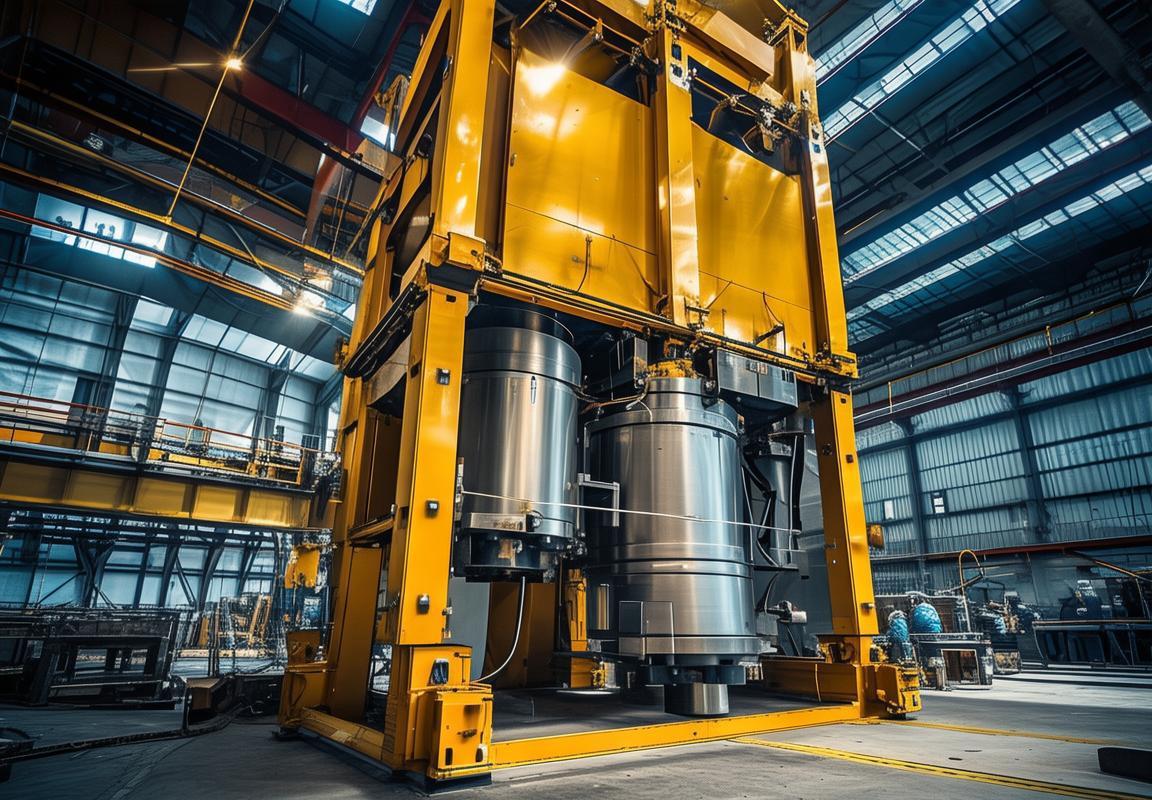
The Evolution of Hydraulic Press Manufacturing
Hydraulic press manufacturing has undergone a remarkable evolution, transforming from rudimentary machines to highly sophisticated tools capable of pushing the boundaries of engineering and material processing. The journey of this technology reflects the advancements in materials, design, and application, all of which have contributed to the press’s rise as a cornerstone of manufacturing processes.
Once a tool primarily used for simple tasks such as forging and stamping, the hydraulic press has expanded its capabilities to include metalworking, plastics molding, and even aerospace applications. The early days of hydraulic press manufacturing were marked by the development of basic hydraulic systems, which relied on the principle of Pascal’s law to amplify force.
In the late 19th century, engineers began experimenting with different materials for hydraulic press cylinders, seeking durability and resistance to wear. Cast iron became the material of choice for its strength and resilience, leading to the creation of the first commercially successful hydraulic presses. These presses were mechanical marvels of their time, utilizing steam power to drive the hydraulic pump that, in turn, activated the press.
As the 20th century progressed, the hydraulic press became more integrated into the automotive and aerospace industries. The increased demand for precision and speed in manufacturing processes pushed the boundaries of hydraulic press design. Innovations in hydraulics, such as the introduction of the variable-displacement pump, allowed for better control over pressure and flow rates, leading to more efficient and precise presses.
The rise of the industrial revolution also brought about a greater emphasis on safety. Early hydraulic presses lacked the safety features that are now standard, such as emergency stop mechanisms and protective guards. Over time, manufacturers recognized the importance of safeguarding operators and equipment, leading to the incorporation of advanced safety features into the design of hydraulic presses.
In the mid-20th century, hydraulic press manufacturing saw a significant shift with the advent of computer numerical control (CNC) technology. CNC systems allowed for greater precision and the ability to program complex movements, which transformed the hydraulic press from a manually operated tool into a highly automated machine. This shift not only increased productivity but also opened doors to new applications in the medical, electronic, and food industries.
The development of materials science has played a crucial role in the evolution of hydraulic presses. The introduction of lightweight alloys and composites has allowed for the creation of hydraulic presses that are more energy-efficient and easier to transport. These materials have also enabled the design of more compact presses that can fit into smaller workspaces without compromising on power or output.
In recent years, the focus on sustainability has driven the hydraulic press industry to innovate further. Eco-friendly hydraulic systems have been developed to reduce energy consumption and emissions. Additionally, the use of renewable energy sources in press operations is becoming more prevalent, aligning hydraulic press manufacturing with global environmental concerns.
The evolution of hydraulic press manufacturing is also a testament to the importance of adaptability. As industries have evolved, so too has the design of hydraulic presses, adapting to new materials, higher forces, and more complex geometries. This adaptability has allowed the hydraulic press to remain a versatile tool across countless sectors.
Today’s hydraulic presses are not just stronger and more precise; they are also equipped with advanced diagnostics and predictive maintenance systems. These systems help to prevent downtime by identifying potential issues before they occur, ensuring that presses run smoothly and efficiently.
In summary, the evolution of hydraulic press manufacturing is a story of continuous improvement and innovation. From the initial forays into hydraulic technology to the cutting-edge presses of today, the journey has been marked by a relentless pursuit of efficiency, precision, and safety. As technology continues to advance, the future of hydraulic press manufacturing promises even more exciting developments, shaping the way we produce goods across the globe.
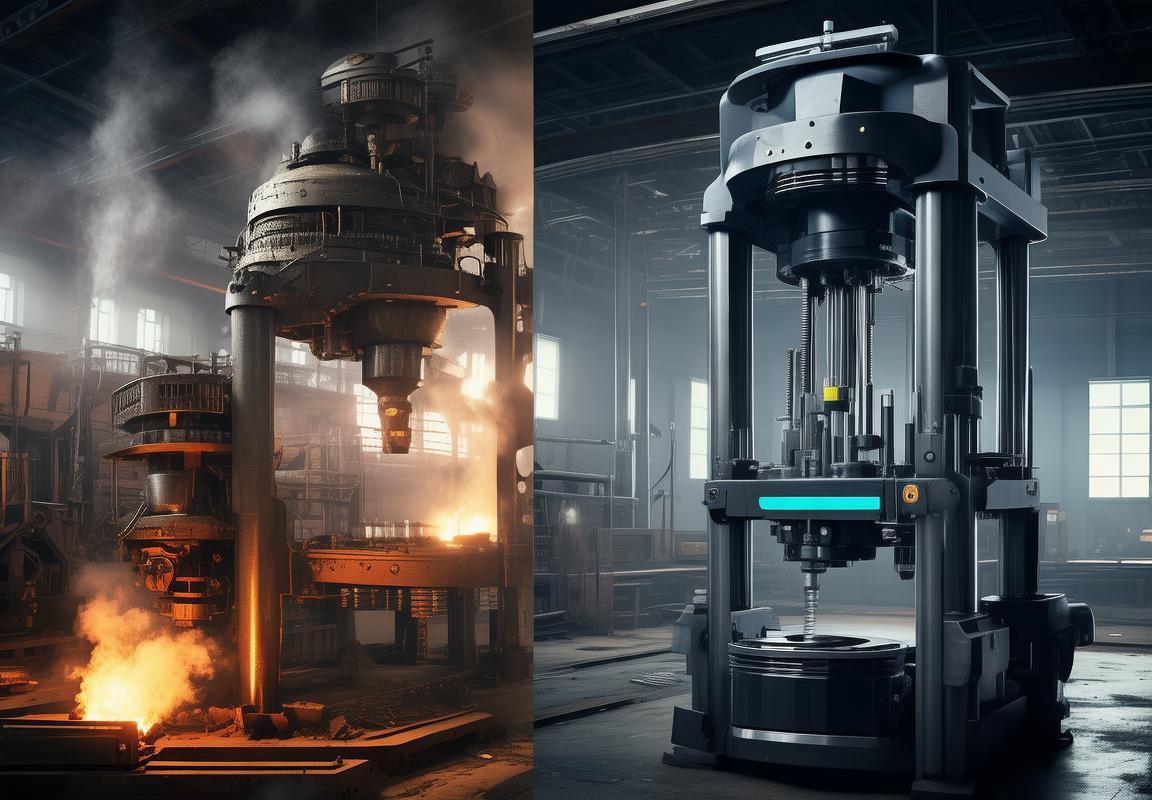
Key Components of a Hydraulic Press
Hydraulic presses are marvels of engineering, designed to apply tremendous amounts of force for metalworking, mold manufacturing, and a variety of industrial tasks. Understanding the key components of these presses is crucial for appreciating their power and precision. Here’s an in-depth look at the vital parts that make up a hydraulic press.
-
Cylinder Block: At the heart of every hydraulic press is the cylinder block. This is the main structural component that houses the cylinder and its internal components. Made from sturdy materials like cast iron or steel, the cylinder block is designed to withstand the extreme pressures exerted during operation.
-
Cylinder: The cylinder is a hollow tube that extends from the cylinder block. It’s the area where the hydraulic fluid is stored under pressure. When the hydraulic system activates, the fluid is forced into the cylinder, pushing the ram (or press platen) and applying force to the workpiece.
-
Hydraulic Pump: The hydraulic pump is the heart of the hydraulic system, responsible for circulating the fluid and maintaining pressure. There are different types of pumps used in hydraulic presses, such as gear pumps, vane pumps, and axial piston pumps. Each has its advantages and is chosen based on the required flow rate, pressure, and efficiency.
-
Reservoir: The reservoir is a large tank that holds the hydraulic fluid. It’s crucial for cooling the fluid and removing contaminants. The reservoir also serves as the fluid’s return point when it’s not in use, and it often contains a filter to maintain the cleanliness of the fluid.
-
Control Valves: Control valves manage the flow of hydraulic fluid, determining when and how much pressure is applied. Directional valves direct the fluid flow, while pressure relief valves maintain a constant pressure by releasing excess fluid. Flow control valves can modulate the speed at which the press operates.
-
Actuators: Actuators are the devices that convert hydraulic energy into mechanical work. In a hydraulic press, the actuator is typically the cylinder, which moves the ram or press platen. There are different types of actuators, including double-acting and single-acting, each with its specific applications.
-
Pilot Control: The pilot control system is a sophisticated feature in many modern hydraulic presses. It uses a small amount of hydraulic fluid to control larger amounts, allowing for precise adjustments in force and speed. This system can often override manual controls, offering semi-automatic or fully automatic operation.
-
Hydraulic Cylinders: Beyond the cylinder block, the individual hydraulic cylinders are vital. They are designed to withstand the pressure and ensure smooth and consistent operation. Double-acting cylinders, for example, can extend and retract the ram, which is essential for applications that require the ram to move both directions.
-
Safety Systems: Safety is paramount in hydraulic press design. This includes overload protection to prevent damage to the press and the workpiece, emergency stop buttons for immediate shutdown, and pressure relief valves to prevent overpressure. These systems are essential for preventing accidents and ensuring compliance with safety standards.
-
Electrical Control Panel: The electrical control panel is the user interface for operating the hydraulic press. It includes switches, buttons, and sometimes touch screens to control the press’s functions. The panel is designed to be user-friendly and to provide quick access to critical information and controls.
-
Support Structures: The hydraulic press’s support structures are designed to hold all the components securely and to distribute the forces evenly. This includes the frame, columns, and other supporting elements that ensure the press remains stable during operation.
-
Linear Guides and Bearings: To ensure precise movement, hydraulic presses use linear guides and bearings. These components allow the ram and other moving parts to move smoothly along their designated paths, reducing friction and wear.
By understanding these key components, one can appreciate the intricate balance of power, control, and precision that defines hydraulic press manufacturing. Each part plays a crucial role in the press’s ability to perform its intended tasks, from the robust cylinder block to the sophisticated electrical control panel.
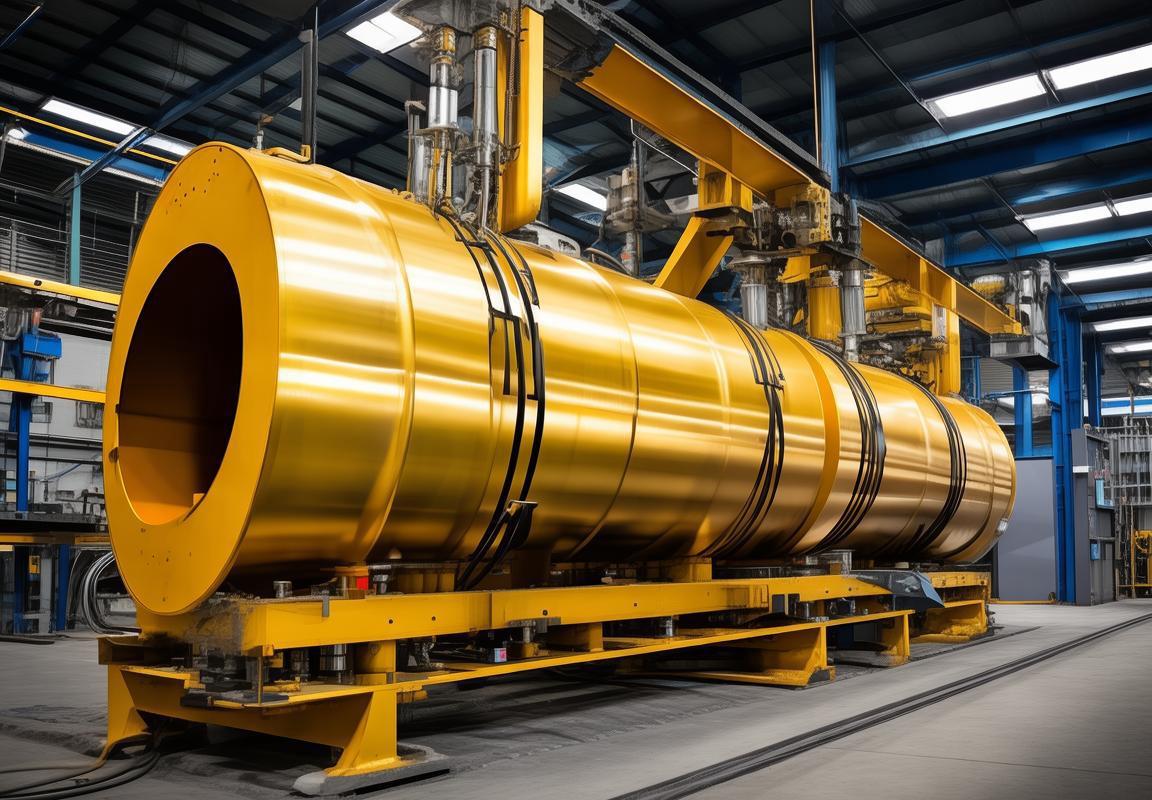
Innovations in Modern Hydraulic Presses
Hydraulic presses have come a long way since their inception, and the innovations in modern hydraulic presses have revolutionized the manufacturing industry. These advancements not only enhance efficiency but also improve safety and precision. Here’s a closer look at some of the key innovations that have shaped the landscape of hydraulic press manufacturing.
The integration of advanced control systems has been a game-changer. Modern hydraulic presses are equipped with sophisticated control units that allow for precise and automated operation. These systems can be programmed to execute complex sequences, ensuring consistent and repeatable results. The ability to set parameters such as pressure, speed, and cycle time with high accuracy has significantly reduced the margin for error in manufacturing processes.
One of the most notable innovations is the adoption of servo-hydraulic technology. This technology combines the power of hydraulic systems with the precision of electric motors. Servo-hydraulic presses offer a more dynamic range of pressure and speed, allowing for a wider variety of applications. The precise control over the hydraulic flow and pressure means that these presses can handle tasks that were previously impossible or required multiple machines.
The design of hydraulic presses has also seen significant improvements. Modern presses are built with lightweight materials, such as aluminum and composite alloys, which reduce the overall weight of the machine. This not only makes them easier to move and install but also reduces the energy required to operate them. The use of these materials also contributes to the longevity of the presses, as they are more resistant to wear and tear.
Safety features have been a focal point in the development of modern hydraulic presses. The inclusion of emergency stop buttons, pressure relief valves, and safety guards has greatly reduced the risk of accidents in the workplace. Additionally, many presses now come with integrated safety systems that can detect and prevent hazardous conditions before they occur. These systems can monitor the pressure, temperature, and fluid levels, ensuring that the press operates within safe parameters.
Energy efficiency is another area where modern hydraulic presses have made significant strides. The implementation of variable displacement pumps has allowed for more efficient use of hydraulic fluid. These pumps can adjust their flow rate to match the demand of the press, reducing energy consumption and heat generation. This not only saves on operational costs but also helps to minimize the environmental impact of manufacturing processes.
In terms of connectivity, modern hydraulic presses are becoming increasingly smart. The integration of IoT (Internet of Things) technology allows these machines to communicate with other devices on the factory floor. This connectivity enables real-time monitoring and predictive maintenance, which can help to identify and address potential issues before they lead to downtime. The ability to collect and analyze data from the press can also provide valuable insights into the manufacturing process, leading to continuous improvement.
The development of new materials has also played a role in the innovation of hydraulic presses. For example, the use of high-strength steel alloys has allowed for the creation of presses with higher working pressures and capacities. This has expanded the range of applications for hydraulic presses, making them suitable for more demanding tasks such as metal stamping, forging, and extrusion.
In the realm of automation, modern hydraulic presses are now capable of working alongside robots and other automated systems. This collaborative automation allows for a seamless integration of the press into the overall manufacturing process. The ability to program the press to work in tandem with robots can greatly increase production speed and efficiency, especially for high-volume manufacturing operations.
The innovation in cooling systems is also worth mentioning. Modern hydraulic presses are equipped with advanced cooling systems that help maintain optimal operating temperatures. These systems can be designed to cool the hydraulic fluid, the hydraulic cylinder, and the workpiece, ensuring that the press operates at peak performance for extended periods without overheating.
Lastly, the user interface has seen a transformation. Modern hydraulic presses are now equipped with touchscreens and intuitive software that make them easier to operate. Operators can quickly adjust settings and monitor the press’s performance without the need for extensive training. This user-friendly design not only improves efficiency but also enhances the overall user experience.
In conclusion, the innovations in modern hydraulic presses reflect a commitment to efficiency, safety, and sustainability. From advanced control systems and servo-hydraulic technology to improved design and safety features, these innovations have made hydraulic presses indispensable tools in the modern manufacturing landscape. As technology continues to evolve, we can expect even more groundbreaking advancements that will further enhance the capabilities of hydraulic presses.
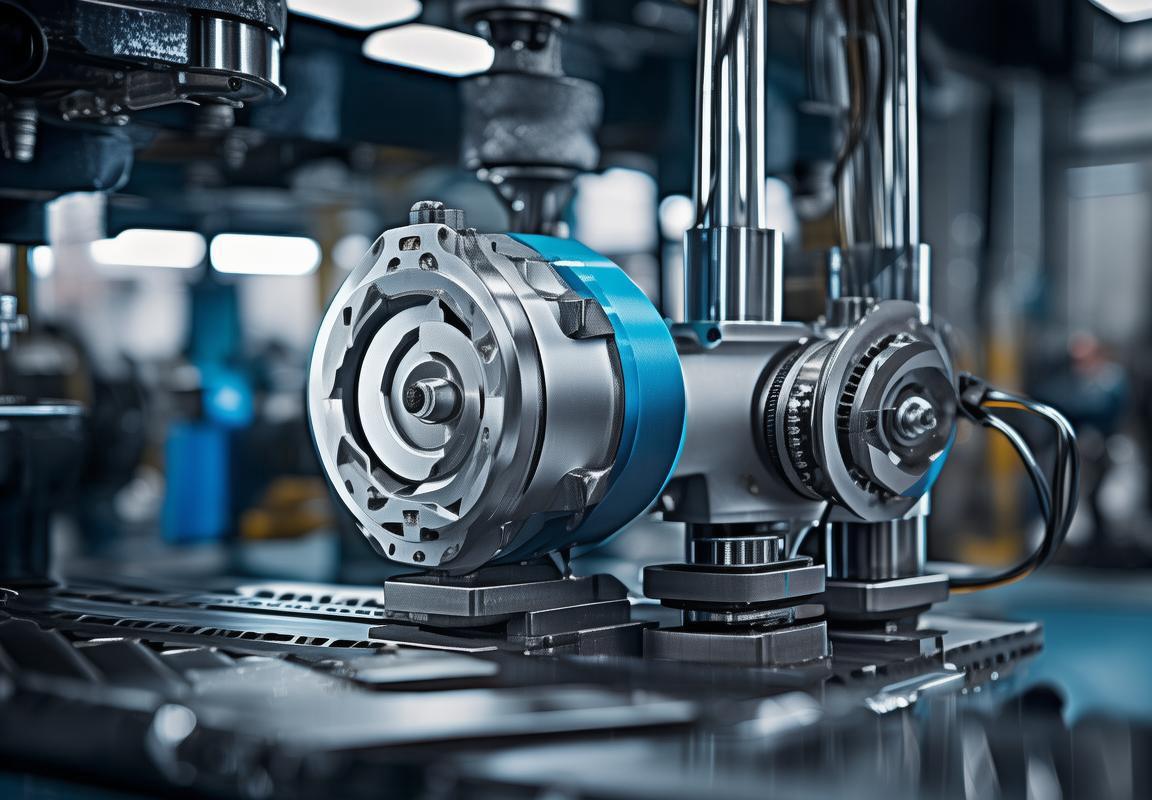
The Manufacturing Process: From Raw Materials to Finish Product
In the intricate world of hydraulic press manufacturing, the journey from raw materials to a finished product is a testament to precision, innovation, and the seamless integration of mechanical and engineering prowess. This process involves several critical stages, each playing a pivotal role in shaping the final product’s quality and performance.
The process begins with the selection of high-quality raw materials, which are the foundation of any hydraulic press. These materials, typically steel alloys, are chosen for their strength, durability, and resistance to wear and tear. The raw materials are then transported to the manufacturing facility, where the transformation begins.
Once at the factory, the raw materials are processed through a series of preparation steps. This includes cutting, shaping, and cleaning the metal to ensure that it meets the exact specifications required for the hydraulic press. Advanced cutting techniques, such as laser cutting or waterjet cutting, are often employed to achieve intricate shapes and precise dimensions.
After the materials have been prepared, they move on to the welding phase. Welding is a critical process in hydraulic press manufacturing, as it connects the various components and ensures structural integrity. Modern hydraulic presses require robust and leak-proof joints, which are achieved through advanced welding techniques like TIG (Tungsten Inert Gas) or MIG (Metal Inert Gas) welding. Skilled welders meticulously join the metal pieces, often requiring multiple passes to achieve the desired strength and finish.
Once the welding is complete, the components are subjected to heat treatment. This process involves heating the metal to a specific temperature and then slowly cooling it down to alter its physical properties. Heat treatment can improve the hardness, toughness, and wear resistance of the steel, making the hydraulic press more durable and reliable.
The next step is the assembly of the hydraulic press. This involves fitting the various components together, including the frame, cylinder, hydraulic system, and control panel. The precision of this assembly is crucial, as any misalignment or loose fit can lead to performance issues or even safety hazards. Modern assembly lines are equipped with automated tools and robotics to ensure accuracy and efficiency.
Once assembled, the hydraulic press undergoes rigorous testing. These tests are designed to verify the press’s ability to perform its intended functions under various conditions. Pressure tests, endurance tests, and leak tests are common, ensuring that the press can handle the high forces and pressures required for its application. Any deviations from the expected performance are meticulously analyzed and corrected.
After passing the testing phase, the hydraulic press moves on to the finishing touches. This includes the application of protective coatings, which can enhance the press’s corrosion resistance and aesthetic appeal. Paint, powder coating, or anodizing are common finishing techniques, each offering different benefits depending on the environment in which the press will be used.
Once the finishing is complete, the hydraulic press is ready for quality assurance checks. These checks involve a thorough inspection of the press’s components, mechanisms, and overall performance. Any defects or issues are addressed before the press is deemed fit for delivery.
The final stage of the manufacturing process is packaging and shipping. The hydraulic press is carefully wrapped to protect it during transit, and it is loaded onto a truck or container for delivery to the customer. This marks the end of the manufacturing journey, with the finished product ready to serve its purpose in various industrial applications.
Throughout this entire process, the focus remains on innovation and continuous improvement. New materials, advanced manufacturing techniques, and cutting-edge design are constantly being integrated to enhance the efficiency, performance, and longevity of hydraulic presses. From the raw materials to the finished product, the manufacturing process is a symphony of engineering excellence, ensuring that each hydraulic press is a testament to human ingenuity and industrial capability.
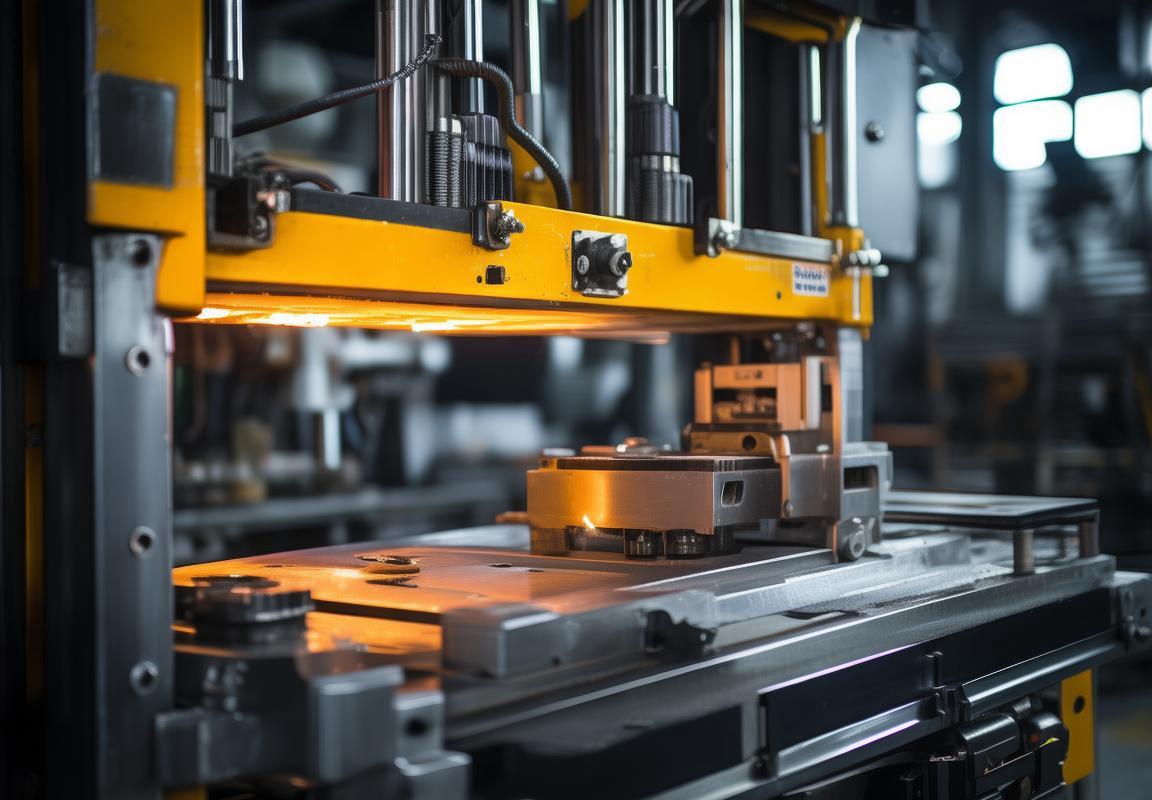
Applications of Hydraulic Presses in Various Industries
Hydraulic presses have become an indispensable tool across a multitude of industries, offering unmatched strength and precision for a variety of manufacturing processes. From automotive to aerospace, the versatility of hydraulic presses is evident in their widespread use. Here’s a look at some of the diverse applications where hydraulic presses are making a significant impact:
In the automotive industry, hydraulic presses are pivotal in the production of complex components such as engine blocks, cylinder heads, and suspension parts. These presses are capable of exerting immense force, ensuring that the materials are formed and shaped accurately. The high tonnage of hydraulic presses allows for the precise stamping and forging of metal sheets, which are then used to create the structural components of vehicles.
The aerospace sector relies on hydraulic presses for the manufacturing of lightweight, high-strength components. These components include aircraft frames, landing gear, and other critical parts that require exceptional durability and precision. The presses are used to form complex shapes from materials like titanium and aluminum, which are essential for the weight reduction and performance enhancement of modern aircraft.
In the metalworking industry, hydraulic presses are used for a range of operations, from blanking and stamping to deep drawing and bending. The ability to apply consistent pressure over a large area makes them ideal for creating intricate metal parts with tight tolerances. This is particularly important in the production of fasteners, metal sheets, and other metal products that require a high degree of accuracy.
The packaging industry benefits from hydraulic presses in the production of containers, lids, and other packaging materials. These presses can form plastic or metal materials into the desired shapes with great efficiency. The ability to handle a variety of materials and the precision of the presses ensure that the packaging is not only functional but also aesthetically pleasing.
In the medical device industry, hydraulic presses are used to manufacture intricate parts that require high levels of precision and cleanliness. These parts include surgical instruments, prosthetics, and orthopedic devices. The controlled environment and the ability to apply even pressure make hydraulic presses a preferred choice for ensuring the quality and safety of these critical components.
The construction industry also finds hydraulic presses useful, particularly in the production of precast concrete elements. These presses are used to shape concrete into beams, columns, and slabs, which are then used in the construction of buildings and infrastructure. The strength and consistency of the presses ensure that the precast elements meet the structural requirements of modern construction projects.
The electronics industry relies on hydraulic presses for the assembly of complex circuits and components. These presses can apply pressure to bond different materials, creating connections that are both strong and reliable. The precision of hydraulic presses is crucial in the production of electronic devices, where even the smallest error can lead to malfunction.
In the energy sector, hydraulic presses are used in the manufacturing of equipment for oil and gas exploration and production. These presses are essential for the production of drill bits, casing, and other components that are subjected to extreme pressure and temperature conditions. The durability and reliability of hydraulic presses are key factors in the success of these operations.
The food and beverage industry also benefits from hydraulic presses, particularly in the production of packaging materials. These presses can form materials into containers, lids, and closures that are used for a wide range of products. The hygiene and safety of these presses are of utmost importance, as they come into contact with food-grade materials.
Lastly, the recycling industry utilizes hydraulic presses to process and recycle materials such as metal, plastic, and paper. These presses are used to compress and densify waste materials, making them easier to transport and process. The efficiency and strength of hydraulic presses are crucial in the recycling process, ensuring that materials are effectively recycled and reused.
The applications of hydraulic presses in various industries are vast and varied, showcasing their adaptability and importance in modern manufacturing processes. From the smallest components to the largest structures, hydraulic presses continue to play a critical role in shaping the products that we use every day.
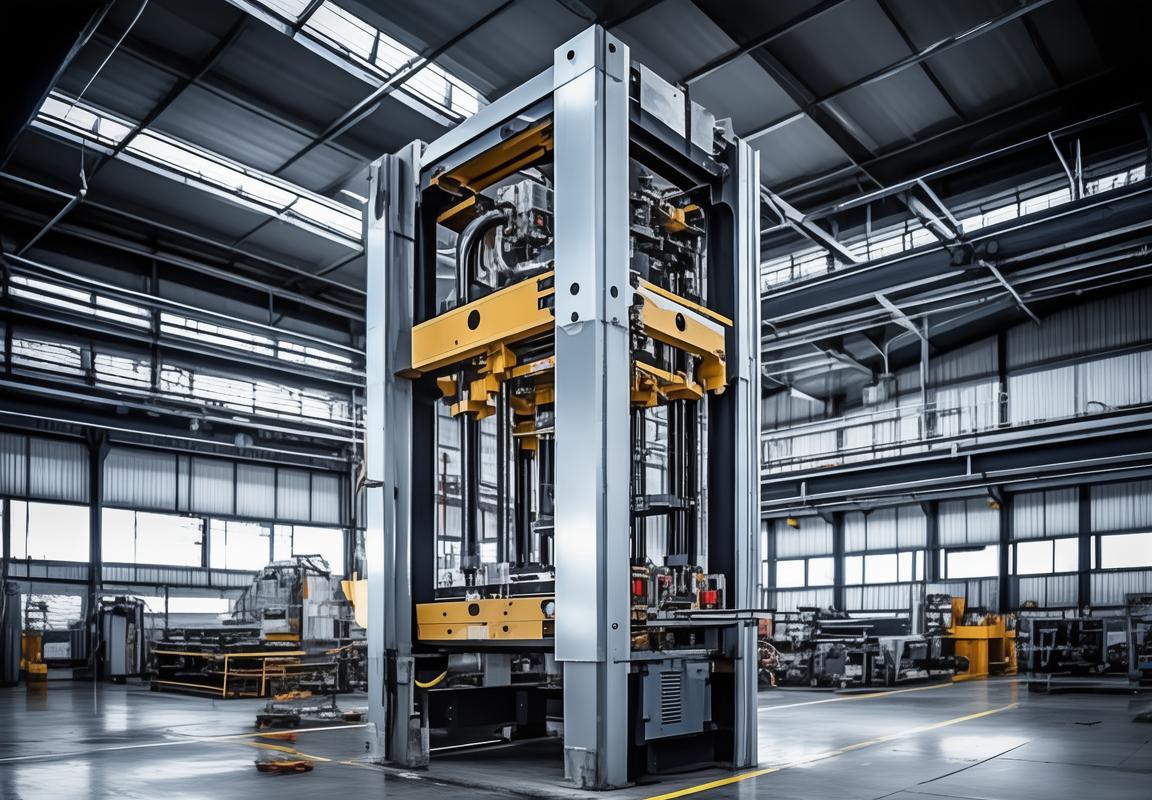
Quality Control and Safety Standards in Hydraulic Press Manufacturing
In the world of hydraulic press manufacturing, ensuring quality and adhering to safety standards is paramount. These two aspects are integral to the production of reliable and durable hydraulic presses that can withstand the rigors of industrial use. Let’s delve into the intricacies of quality control and safety standards in this field.
Hydraulic presses are complex machines, and their components must be meticulously inspected and tested to guarantee performance and longevity. One key aspect of quality control is the use of high-grade materials. Steel, for instance, is a common material used in the construction of hydraulic presses, and its quality can significantly impact the press’s lifespan and strength.
The raw steel is sourced from reputable suppliers and undergoes a series of checks before being used in the manufacturing process. These checks include verifying the steel’s chemical composition, tensile strength, and hardness. Any inconsistencies or deviations from the specified standards are flagged, and the material is either rejected or reprocessed to meet the required specifications.
Once the materials are selected, the manufacturing process begins with precision engineering. Each component is crafted with exacting tolerances to ensure a perfect fit. The precision of these parts is crucial, as any misalignment or imperfection can lead to malfunctions or reduced efficiency.
During assembly, quality control teams closely monitor the process. They inspect the hydraulic cylinders, pistons, seals, and other critical components for any signs of damage or wear. Advanced measuring tools, such as calipers and micrometers, are used to ensure that all parts meet the specified dimensions.
Safety is another critical factor in hydraulic press manufacturing. These machines operate under high pressure and can pose serious risks if not handled properly. Therefore, safety standards are rigorously enforced throughout the manufacturing process.
One of the first safety measures is the design of the press itself. Engineers employ fail-safe mechanisms and safety guards to prevent accidents. These features include emergency stop buttons, pressure relief valves, and interlocks that prevent the machine from operating unless all safety protocols are met.
During the manufacturing process, workers are trained to follow strict safety procedures. They wear appropriate protective gear, such as gloves, safety glasses, and steel-toed boots, to minimize the risk of injury. Regular safety briefings are conducted to reinforce the importance of adhering to safety protocols.
Regular maintenance and inspections are also essential in maintaining both quality and safety. Machines are tested for leaks, proper alignment, and functionality. Any issues detected are promptly addressed to prevent potential hazards.
In addition to in-house quality control and safety measures, hydraulic press manufacturers often undergo third-party audits to ensure compliance with international standards. These audits assess the company’s processes, procedures, and documentation to verify that they meet the required criteria.
Certifications like ISO 9001 and ISO 45001 are common in the industry. ISO 9001 focuses on quality management systems, ensuring that the manufacturing process is efficient and that the final product meets customer expectations. ISO 45001, on the other hand, deals with occupational health and safety management systems, emphasizing the well-being of employees.
In conclusion, the manufacturing of hydraulic presses is a meticulous process that demands a high level of quality control and adherence to safety standards. From the selection of raw materials to the final assembly and testing, every step is carefully monitored to ensure that the end product is not only reliable but also safe for use. By prioritizing these aspects, hydraulic press manufacturers can deliver machines that stand the test of time and industry demands.
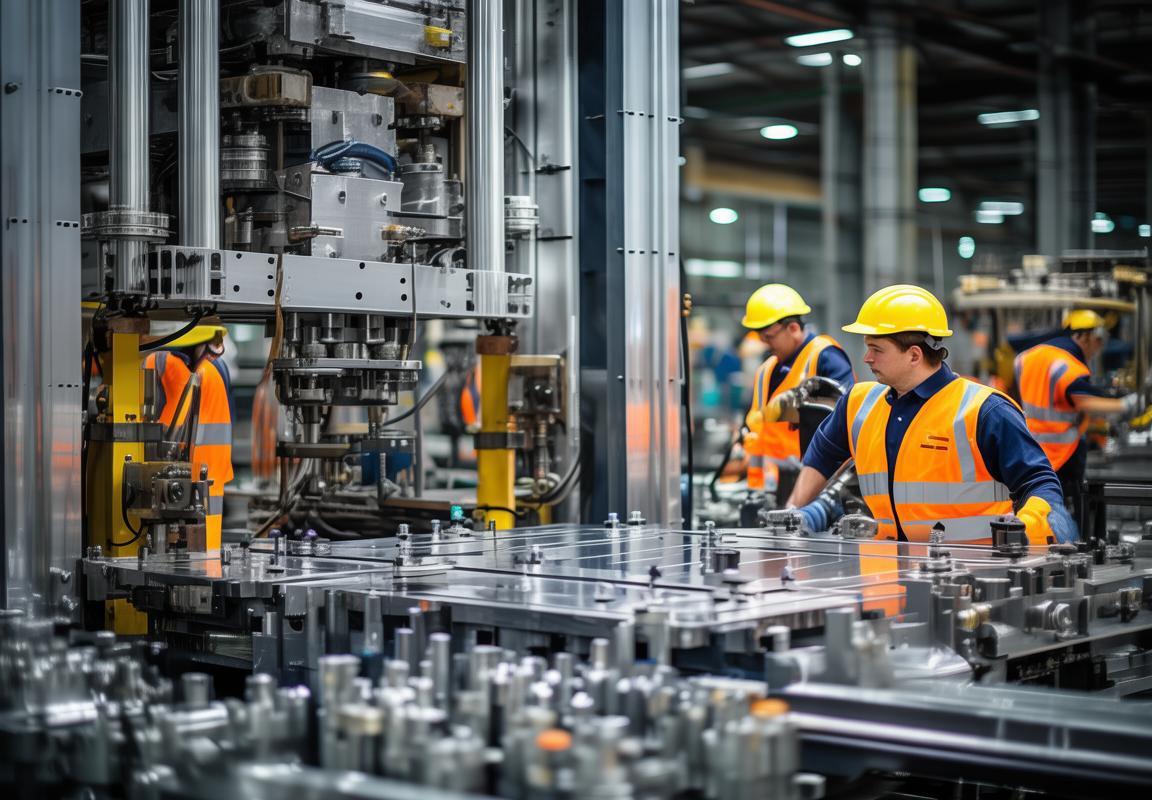
The Role of Technology in Advancing Hydraulic Presses
In the ever-evolving landscape of manufacturing, technology has become a driving force behind the advancements in hydraulic presses. These machines, once simple and robust, have transformed into sophisticated tools, capable of handling a wide range of tasks with precision and efficiency. The role of technology in advancing hydraulic presses is multifaceted, encompassing design, materials, control systems, and automation.
The integration of advanced design software has revolutionized the creation of hydraulic presses. CAD (Computer-Aided Design) and CAM (Computer-Aided Manufacturing) systems allow engineers to simulate and optimize the performance of these machines before they are built. This not only reduces the time and cost of prototyping but also ensures that the final product meets the highest standards of efficiency and durability. The ability to fine-tune the design parameters allows for presses that are tailored to specific applications, ensuring optimal performance.
Materials science has also played a pivotal role in the advancement of hydraulic presses. The development of high-strength alloys and advanced composites has allowed for the construction of lighter, yet stronger, presses. These materials not only reduce the weight of the machinery but also enhance its lifespan, as they are more resistant to wear and tear. The use of advanced materials has also enabled the creation of presses with higher working pressures and speeds, broadening their range of applications.
The control systems of hydraulic presses have seen a significant leap forward with the introduction of advanced electronics and sensors. Modern hydraulic presses are equipped with PLCs (Programmable Logic Controllers) and HMI (Human-Machine Interface) systems that provide real-time monitoring and control. These systems allow operators to adjust the pressure, speed, and other parameters with precision, ensuring consistent and repeatable results. The incorporation of AI and machine learning algorithms has led to predictive maintenance, where the press can anticipate and prevent potential issues before they occur.
Automation has become a cornerstone in the manufacturing industry, and hydraulic presses are no exception. The integration of robotics and automation into hydraulic press operations has streamlined production processes and increased productivity. Automated systems can handle repetitive tasks, reducing the risk of human error and freeing up workers to focus on more complex activities. The ability to program hydraulic presses to perform a variety of tasks has made them versatile tools in numerous industries.
One of the most significant technological advancements in hydraulic presses is the development of energy-efficient systems. Traditional hydraulic presses consume a considerable amount of energy, but new technologies have been introduced to reduce this footprint. Variable displacement pumps, for example, adjust the flow of hydraulic fluid based on the demand, resulting in energy savings. Additionally, the use of regenerative braking systems helps to recover energy during deceleration, further enhancing efficiency.
Another area where technology has made a substantial impact is in the realm of safety. Modern hydraulic presses are equipped with numerous safety features, such as emergency stop buttons, pressure relief valves, and safety guards. These features protect both the operators and the machinery from potential hazards. The incorporation of smart sensors that can detect anomalies in real-time has also added an extra layer of safety, alerting operators to any potential issues before they escalate.
The role of technology in advancing hydraulic presses is evident in the industry’s ability to produce more complex parts with greater accuracy and efficiency. The precision of these machines has been enhanced by the use of CNC (Computer Numerical Control) technology, which allows for intricate shaping and forming processes. This precision is critical in industries such as aerospace, automotive, and medical, where the quality and reliability of parts are paramount.
In conclusion, the advancements in technology have transformed hydraulic presses into powerful, efficient, and safe tools for manufacturing. From the design phase to the final product, technology continues to drive innovation and improve the capabilities of these machines. As the industry evolves, it’s clear that the role of technology in advancing hydraulic presses will only grow more significant, leading to even more sophisticated and capable machines in the future.
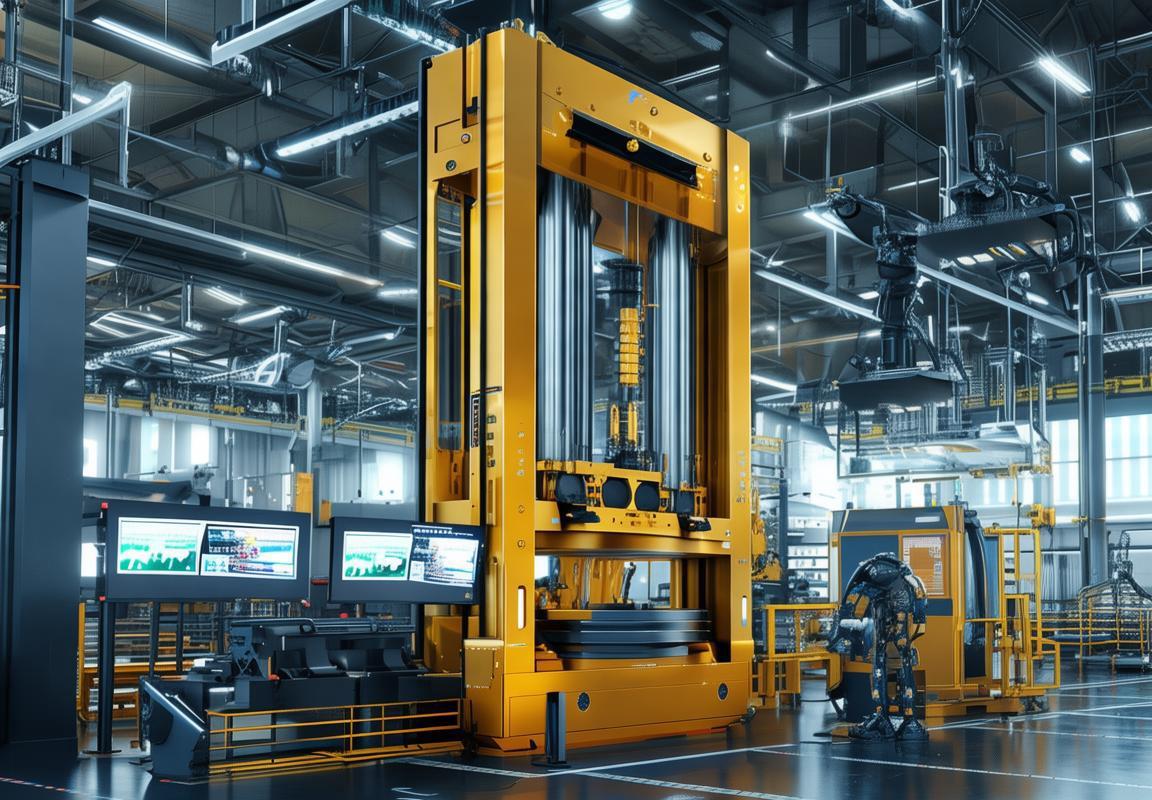
Case Studies: Success Stories in Hydraulic Press Manufacturing
The story of hydraulic press manufacturing is one filled with innovation and progress. Here are some notable success stories that highlight the achievements and the impact of hydraulic press manufacturing.
In the automotive industry, a leading car manufacturer turned to a hydraulic press to streamline their metal stamping process. The introduction of the hydraulic press allowed for higher production rates with improved quality control. The flexibility of the press in handling different materials and shapes significantly reduced waste and enhanced the precision of parts, ultimately saving time and costs.
Another success tale comes from the aerospace sector. A renowned aircraft manufacturer faced challenges in producing lightweight yet robust components. By implementing a state-of-the-art hydraulic press, they were able to achieve complex geometries and high-strength requirements. The press’s ability to apply uniform pressure over large areas minimized distortion and ensured the components met the stringent quality standards necessary for aircraft construction.
The medical device industry has also witnessed transformative results from hydraulic presses. A company specializing in the production of orthopedic implants adopted a hydraulic press to mold intricate metallic parts with extreme accuracy. The precision of the hydraulic press not only ensured the durability of the devices but also enabled the company to meet the strict regulatory requirements for medical-grade products.
A notable example in the packaging industry involves a beverage manufacturer that struggled with the production of lightweight yet sturdy bottles. By investing in a high-pressure hydraulic press, they were able to create bottles that maintained their integrity during transportation and stacking. The efficiency and consistency provided by the hydraulic press not only increased production but also helped the company achieve a competitive edge in the market.
The defense sector has also leveraged the power of hydraulic presses. A military equipment manufacturer used a hydraulic press to produce complex metal components for a new line of tactical vehicles. The press’s ability to handle high-pressure operations and maintain precise dimensions was crucial in ensuring the strength and reliability of the components under extreme conditions.
In the field of energy, hydraulic presses have played a vital role in the production of wind turbine blades. A wind turbine blade manufacturer needed a reliable method to bond composite materials without compromising the structural integrity of the blades. By using a hydraulic press, they could apply consistent pressure to create a seamless bond, leading to stronger and more durable blades that could withstand the harsh conditions of wind farms.
The success stories in the hydraulic press manufacturing sector don’t end there. A manufacturer of electrical transformers faced the challenge of creating precision metal parts with intricate details. The hydraulic press they installed allowed them to produce these parts with a level of accuracy that was previously unattainable, resulting in more efficient transformers and reduced energy losses.
In the construction industry, a supplier of structural steel components found that hydraulic presses were the key to producing custom-designed parts for high-rise buildings. The ability to handle heavy-duty applications and to form steel into complex shapes with minimal distortion was critical in ensuring the structural integrity and aesthetic appeal of the buildings.
These success stories underscore the versatility and adaptability of hydraulic presses across various industries. From automotive to aerospace, medical devices to packaging, and from defense to energy, hydraulic presses have become an indispensable tool in modern manufacturing processes. Their ability to shape, mold, and form materials with precision and efficiency continues to drive innovation and success in the production of high-quality goods and products.
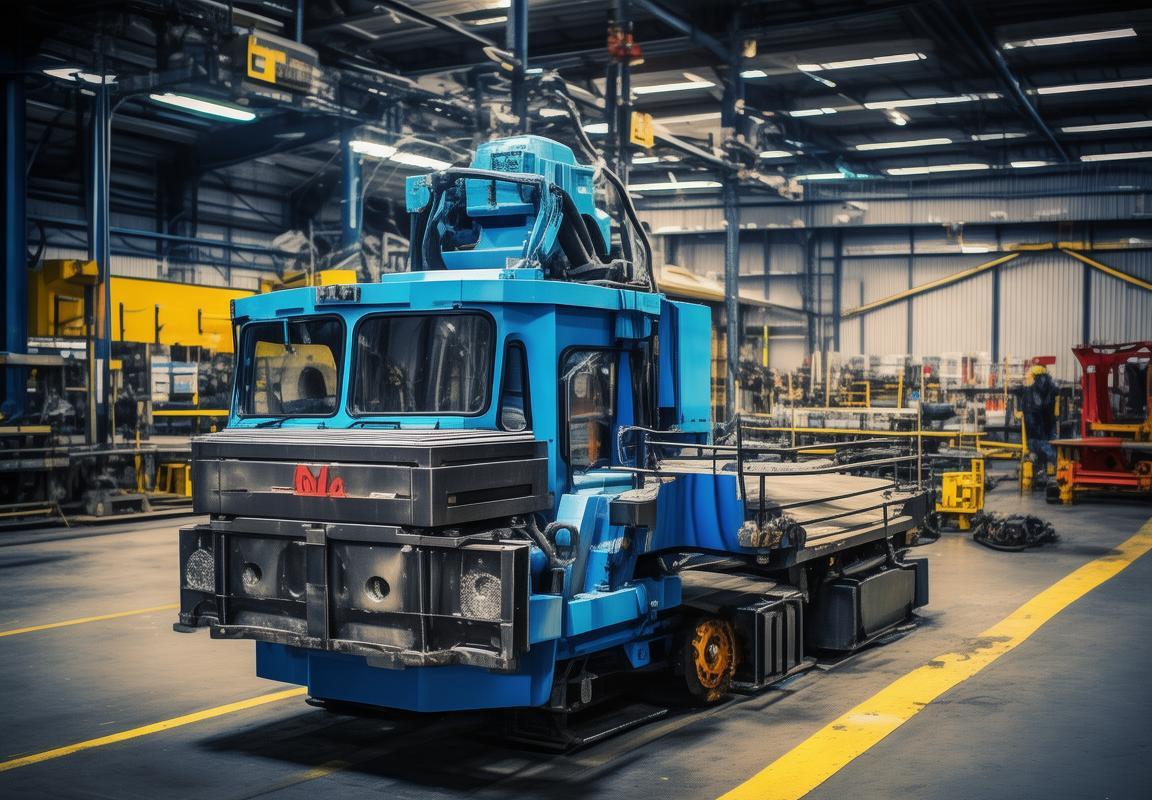
The Future of Hydraulic Press Manufacturing
The future of hydraulic press manufacturing is a tapestry woven with technological advancements, evolving industry needs, and a commitment to sustainability. As we look ahead, several key trends and considerations are shaping the landscape of this vital sector.
Hydraulic presses, with their incredible force and versatility, have long been the backbone of numerous manufacturing processes. However, the industry is not standing still. Here are some of the directions in which hydraulic press manufacturing is expected to progress:
In the realm of technology, the integration of the Internet of Things (IoT) promises to revolutionize how hydraulic presses are monitored and operated. Sensors and smart devices can provide real-time data on machine performance, predictive maintenance schedules, and energy consumption, leading to more efficient and cost-effective operations.
The development of electric hydraulic systems is also gaining momentum. These systems offer significant energy savings compared to traditional hydraulic presses, which rely on hydraulic fluids. With the increasing focus on green manufacturing, electric hydraulic presses are becoming a more attractive option for businesses looking to reduce their carbon footprint.
One of the most exciting advancements is the rise of additive manufacturing, or 3D printing, in conjunction with hydraulic presses. This fusion of technologies allows for the creation of complex shapes and structures that were once impossible to produce with traditional methods. The precision and speed of hydraulic presses, when combined with the design flexibility of 3D printing, could lead to a new era of customized and on-demand manufacturing.
Material science is another area that is poised to impact hydraulic press manufacturing. The development of new alloys and materials that can withstand higher temperatures and pressures means that hydraulic presses can be designed to handle more demanding applications. This could lead to more efficient processing of advanced materials, such as composites and superalloys.
Safety is always a top priority in manufacturing, and the future of hydraulic press manufacturing will likely see further enhancements in safety features. This includes advanced emergency stop systems, better guarding to protect operators, and the implementation of machine vision systems to prevent accidents and improve quality control.
Regulatory compliance is also a driving force behind innovation. As environmental and safety standards become more stringent, manufacturers will need to ensure that their hydraulic presses meet these requirements. This could involve the development of new technologies to reduce emissions, improve energy efficiency, and ensure operator well-being.
The global supply chain is another area that will influence the future of hydraulic press manufacturing. With the rise of Industry 4.0 and the need for global collaboration, manufacturers will need to adapt to new ways of working, including the use of cloud computing and remote monitoring to maintain operations across different locations.
Innovation in software and control systems is also a critical factor. Advanced control algorithms can optimize the performance of hydraulic presses, ensuring that they operate at peak efficiency while minimizing waste. This level of sophistication is essential for the industry to remain competitive and meet the demands of a rapidly evolving market.
The future of hydraulic press manufacturing is also about embracing the digital transformation. Virtual reality (VR) and augmented reality (AR) technologies are beginning to find their way into the industry, offering new ways to design, test, and train operators. These technologies can simulate real-world scenarios, allowing manufacturers to troubleshoot issues and improve processes without the need for physical prototypes.
Finally, there is a growing trend towards customization. As customers demand more tailored solutions, manufacturers will need to be able to produce hydraulic presses that are configured to specific requirements. This could involve modular designs that allow for easy upgrades and modifications, or even the ability to customize presses through software-defined parameters.
In conclusion, the future of hydraulic press manufacturing is bright, with a multitude of opportunities for innovation and improvement. As the industry continues to evolve, it will be driven by a combination of technological advancements, environmental concerns, and the need for increased efficiency and customization. By staying ahead of these trends, manufacturers can ensure that their hydraulic presses remain at the forefront of the manufacturing landscape.